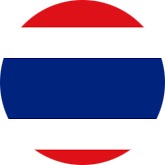Course Description
Welding Technology plays a major role in all maintenance and fabrication activities in the industry. Production equipment, a highly sophisticated welding technique and qualified personnel allow processing or production of steel products for different applications within short periods. This seminar provides a much needed source of authoritative information on the complex subject of welding. It provides a comprehensive run-down of the complex science of welding- processes, selection of power sources, weld metallurgy, weldability of metals, testing and inspection techniques.
The seminar will cover welding processes, welding consumables, design of welded joints, applied welding metallurgy and heat treating, welding quality control, non-destructive testing and major International Welding Codes and Standards such as AWS and API.
Each session will be conducted in a lecture/discussion format and videos designed to provide intensive instruction and guidance. The director will be available following each day’s session to provide participants with further opportunity for discussion and consideration of specific problems.
Course Objective
- Upon the successful completion of this seminar, the participants should be able to:
- Identify the tools and techniques associated with welding-related fabrication and quality control.
- Point out practical aspects of fabrication and inspection which should be taken into consideration in the design of equipment.
- Monitor fabrication and erection plans and incorporate some quality control requirements into contractual documents.
- Achieve economical compliance with ASME, AWS and API Standards when writing and qualifying welding and brazing procedures.
- Gain insights into ASME Code, AWS and API Standards to facilitate interpreting, understanding and complying with Standards.
- Review welding processes, common variables and basic welding metallurgy.
- Find out how to qualify welders and brazers the easy way.
- Writing and qualifying welding procedures that comply with ASME Code, AWS and API Standards with an in-depth understanding of the requirements.
- Understand and examine the requirements for welder and operator qualification in details and in an easy way.
- Select test coupons to minimize overall cost of qualification and writing WPSs so that optimum flexibility is achieved
Who Should attend?
Inspection engineers, Mechanical Engineers, Electrical Engineers, NDT personnel, quality assurance personnel, auditors, testing laboratory personnel, and maintenance personnel. Further, this seminar is a must for anyone involved in inspection of welding construction, qualifying welders, brazers and operators; or other involved in writing and qualifying welding and brazing procedure specifications; those responsible for reviewing supplier procedures, auditing or reviewing in-house procedures and qualifications; and those who estimate jobs where compliance of ASME code.
Course Outline
Day 1
- Welding Processes
- Fundamentals
- SMAW (Shielded Metal Arc)
- GTAW (Gas Tungsten Arc)
- GMAW (or MIG) (Gas Metal Arc)
- FCAW (Flux Cored Arc)
SAW (Submerged Arc)
Classification of Arc Welding Consumables
- Coated Electrodes
- GMAW and GTAW Wires
- FCAW Wires
- Sub Arc Wires and Fluxes
- Neutral and Active Fluxes
- Shielding Gases
Day 2
Introduction to Properties of Materials
- Strength of Materials
- Material Properties
- Destructive Testing
Fatigue of Welded Structures
- Fatigue mechanisms
- Weld finish classifications
Joint Designs
- Joints
- Symbols
- Design for Productivity
Dissimilar Welds and Weld Overlays
Day 3
Metallurgical Properties of Steel & Heat Treatment
- Metallurgical Properties of Steel
- Preheating
- Post Weld Heat Treatment (PWHT)
- Field Heat Treating Equipment
- Plans for PWHT
Welding Quality Control
API 1104 and AWS D1.1: History and Structure
- Historical Development of AWS D1.1 and API 1104
- Pre-Qualification and Qualification of Welding Procedures
- The use of Pre-qualified procedures
- Base Metal Classifications to AWS and API
ASME Code, History and Structure
- Historical Development of Section IX
- Relationship of Section IX to Other Codes (ASME V111 and B31.3)
- Organization, Structure and Mechanics of Using Section IX – Essential, Non-Essential and Supplemental Essential Variables
Day 4
ASME Section IX: Base and Filler Metal Specifications
- P numbers and Base Metal Classifications
- F-numbers
- A-numbers
- SFA and Non-SFA filler metal specifications
- The use of Standard Welding Procedures
ASME Section IX: Selecting and preparing the test coupon for both procedure and Welder qualifications.
- Obtaining maximum cost-effectiveness from test coupons
- Preparation and welding of the test coupon
- Recording both necessary and worthwhile data
- Demonstrating code compliance
ASME Section IX: Writing Welding Procedure Specification
- Meeting code requirements
- Addressing customer requirements
- Providing direction to the welder
- Sources of information for preparing intelligent and meaningful welding procedure specifications
ASME Supplemental Va
riables – special consideration for notch-toughness
- How welding influences toughness
- Toughness requirements of construction codes
- Measuring and recording heat input data
- Translating heat input data into useful directions for a welder
- Typical construction code requirements
Day 5
Welding Safety
- Electric Shock
- Radiation
- · Fire and explosions
- Eye injuries
- Fume
- Hearing impairment
Procedure Specification
- Use of Section IX form
- Other Formats
- Procedure qualification record forms
- Revisions to records and procedures
Procedure Specification
- Use of Section IX form
- Other Formats
- Procedure qualification record forms
- Revisions to records and procedures
- Take-home test
ASME Brazing Qualifications
- Brazing process and variables
- Differences between QW and QB Sections
- Preparation of the Brazing Procedure Specification
ASME Brazing Qualifications (cont’d)
- Qualification of the brazing procedure
- Types of tests
- Qualification of brazers and brazing operators





















































